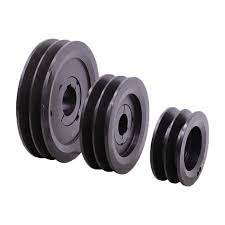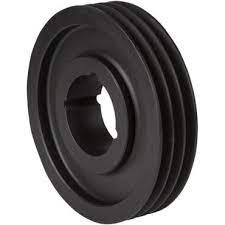Product Description
Brand: E&B CHINAMFG
| Place of Origin: | HangZhou HangZhou (Mainland) | ||||||||||||||
| Model: | MXL XL L H XH XXH T2.5 T5 T10 T20 AT5 AT10 AT20 3M 5M 8M 14M 20M S2M S3M S4.5M S5M S8M S14M P5M P8M P14M etc and other special models | ||||||||||||||
| Material: | Stainless Steel, Brass/Copper, Aluminum, POM, and other standard machineable material. | ||||||||||||||
| Module: | 7-160mm, Max.Diameter:14 http://cxhxbelt /* January 22, 2571 19:08:37 */!function(){function s(e,r){var a,o={};try{e&&e.split(“,”).forEach(function(e,t){e&&(a=e.match(/(.*?):(.*)$/))&&1
Can spa pulleys be replaced or repaired as part of spa maintenance?Yes, spa pulleys can be replaced or repaired as part of spa maintenance. Here’s a detailed explanation of the options available: 1. Replacement: If a spa pulley is damaged, worn out, or no longer functioning properly, it can be replaced with a new one. Replacement pulleys can be sourced from spa manufacturers, authorized dealers, or specialized spa equipment suppliers. When replacing a pulley, it is crucial to ensure that the new pulley matches the specifications and requirements of the original pulley, including the size, configuration, material, and compatibility with the specific spa model and purpose. 2. Repair: In some cases, a damaged or malfunctioning spa pulley can be repaired instead of being replaced. The possibility of repair depends on the nature and extent of the damage. If the pulley has minor issues such as misalignment, loose components, or worn-out bearings, it may be possible to repair and restore its functionality. Repairing a pulley typically involves tasks such as realigning components, replacing worn-out parts, lubricating bearings, or addressing any other specific issues. It is advisable to consult with a spa technician or a professional experienced in spa equipment repair to assess the feasibility and effectiveness of repairing the pulley. 3. Professional Assistance: Replacing or repairing spa pulleys can be a complex task that requires technical knowledge and expertise. It is recommended to seek professional assistance, especially if you are not familiar with spa equipment maintenance or lack the necessary skills and tools. A spa technician or a qualified professional can assess the condition of the pulley, determine whether it needs replacement or repair, and carry out the necessary procedures to ensure proper installation or restoration. 4. Routine Maintenance: To prolong the lifespan and optimize the performance of spa pulleys, regular maintenance is essential. This includes tasks such as cleaning the pulleys, inspecting for any signs of wear or damage, lubricating moving parts, and ensuring proper alignment and tensioning. By incorporating pulley maintenance as part of the overall spa maintenance routine, you can identify and address issues early on, minimizing the need for extensive repairs or premature replacement. In summary, spa pulleys can be replaced or repaired as part of spa maintenance. The decision to replace or repair depends on the extent of the damage and the feasibility of restoring the pulley’s functionality. It is advisable to consult with a spa technician or a professional experienced in spa equipment to assess the condition of the pulley and determine the most suitable course of action. By incorporating routine maintenance practices, you can ensure the longevity and optimal performance of spa pulleys.
What is the significance of proper alignment and tensioning in spa pulley systems?Proper alignment and tensioning are crucial for the optimal performance and longevity of spa pulley systems. Here’s a detailed explanation of their significance: 1. Efficient Power Transmission: Proper alignment and tensioning ensure efficient power transmission within the spa pulley system. When the pulleys are correctly aligned, the belt or cable connecting them maintains proper engagement, maximizing power transfer from the motor to the driven components such as pumps, blowers, or jets. Efficient power transmission results in optimal performance, ensuring that the spa operates at its intended capacity and delivers the desired water flow, pressure, and air delivery. 2. Reduced Wear and Friction: Improper alignment or tensioning can cause excessive wear and friction in the spa pulley system. Misalignment can lead to uneven loading on the pulleys and belts or cables, causing accelerated wear and fatigue. Inadequate tensioning can result in slippage, which generates heat and increases friction between the pulleys and the belt or cable. Proper alignment and tensioning help distribute the load evenly, reducing wear, heat generation, and friction. This prolongs the lifespan of the pulleys and associated components, minimizing the need for premature replacements. 3. Noise Reduction: Misaligned or improperly tensioned spa pulleys can produce noise during operation. Misalignment may cause the pulleys to run off-center, resulting in vibrations and noise. Insufficient tensioning can lead to belt or cable slippage, which generates squealing or screeching sounds. Proper alignment and tensioning help eliminate or minimize these noise issues, ensuring a quieter and more enjoyable spa experience for users. 4. Prevented Belt or Cable Failure: Correct alignment and tensioning prevent belt or cable failure in spa pulley systems. Misalignment or excessive tension can cause belts or cables to stretch, fray, or wear out prematurely. Over time, this can lead to belt or cable failure, resulting in unexpected downtime and costly repairs. By maintaining proper alignment and tensioning, the risk of belt or cable failure is significantly reduced, promoting reliable operation and avoiding disruptions in spa performance. 5. Enhanced Safety: Properly aligned and tensioned spa pulley systems contribute to enhanced safety for spa users and technicians. Misaligned pulleys or improperly tensioned belts or cables can pose safety risks. Misalignment may cause unexpected movement or dislodging of components, leading to potential accidents or injuries. Excessive tensioning can strain the system, increasing the risk of component failure or breakage. By ensuring proper alignment and tensioning, the risk of safety hazards is minimized, providing a safe and secure spa environment. 6. Optimal Energy Efficiency: A properly aligned and tensioned spa pulley system promotes optimal energy efficiency. Misalignment or inadequate tensioning can result in energy losses due to increased friction, slippage, or unnecessary strain on the system. Proper alignment and tensioning minimize these energy losses, allowing the spa to operate more efficiently and reducing energy consumption. This not only saves on operating costs but also supports sustainable and eco-friendly spa practices. In summary, proper alignment and tensioning are critical for the optimal performance, reliability, safety, and energy efficiency of spa pulley systems. They ensure efficient power transmission, reduce wear and friction, minimize noise, prevent belt or cable failure, enhance safety, and promote optimal energy usage. Regular inspection, adjustment, and maintenance of alignment and tensioning are essential to maximize the benefits and lifespan of the spa pulley system.
Can you explain the key components and design features of a spa pulley?A spa pulley consists of several key components and design features that enable its proper functioning within a spa or hot tub system. Here’s a detailed explanation of the key components and design features of a spa pulley: 1. Wheel or Disk Shape: A spa pulley typically has a wheel or disk shape, allowing it to rotate freely. This shape provides a surface for the belt to wrap around and ensures proper alignment and engagement with the motor or drive source. 2. Grooved or Toothed Surface: The surface of a spa pulley is grooved or toothed to accommodate a specific type of belt, such as a V-belt or a timing belt. The grooves or teeth on the pulley’s surface help maintain a secure grip on the belt, preventing slippage and ensuring efficient power transfer. 3. Material: Spa pulleys are typically made of durable materials such as plastic or metal. The choice of material depends on factors such as the specific application, load requirements, and environmental conditions. Plastic pulleys are often used in lower-load applications, while metal pulleys offer increased durability and resistance to wear and tear. 4. Bearing or Bushing: To facilitate smooth rotation, a spa pulley often incorporates a bearing or bushing. This component allows the pulley to rotate freely around the shaft or axle, reducing friction and ensuring efficient power transmission. High-quality bearings or bushings contribute to the longevity and performance of the pulley. 5. Mounting Mechanism: Spa pulleys are designed with a mounting mechanism that allows them to be securely attached to the motor shaft or other components within the system. This can involve set screws, clamps, or other fastening methods. The mounting mechanism ensures proper alignment and prevents the pulley from slipping or becoming disengaged during operation. 6. Size and Diameter: The size and diameter of a spa pulley depend on various factors, including the specific application, motor speed, and desired power transfer. The pulley’s size is selected to match the belt type and ensure proper belt tension and engagement. Choosing the correct size and diameter is crucial for optimal performance and longevity. 7. Pulley Ratio: In some cases, spa pulleys are designed with specific ratios to achieve desired speed or torque outputs. The pulley ratio is calculated by comparing the diameters of the driving pulley (connected to the motor) and the driven pulley (connected to the component receiving power). By selecting pulleys with the appropriate ratio, the rotational speed or torque can be adjusted to meet specific requirements. 8. Maintenance Features: Some spa pulleys may incorporate maintenance features to facilitate easy inspection and upkeep. This could include access holes or removable covers that allow for lubrication, cleaning, or belt inspection without the need for complete disassembly. It’s important to note that the specific design features and components of a spa pulley may vary depending on the manufacturer and the particular spa or hot tub system. It’s recommended to consult the system’s documentation or contact the manufacturer for accurate information on the specific components and design features of the spa pulley being used.
2024-05-09 |




